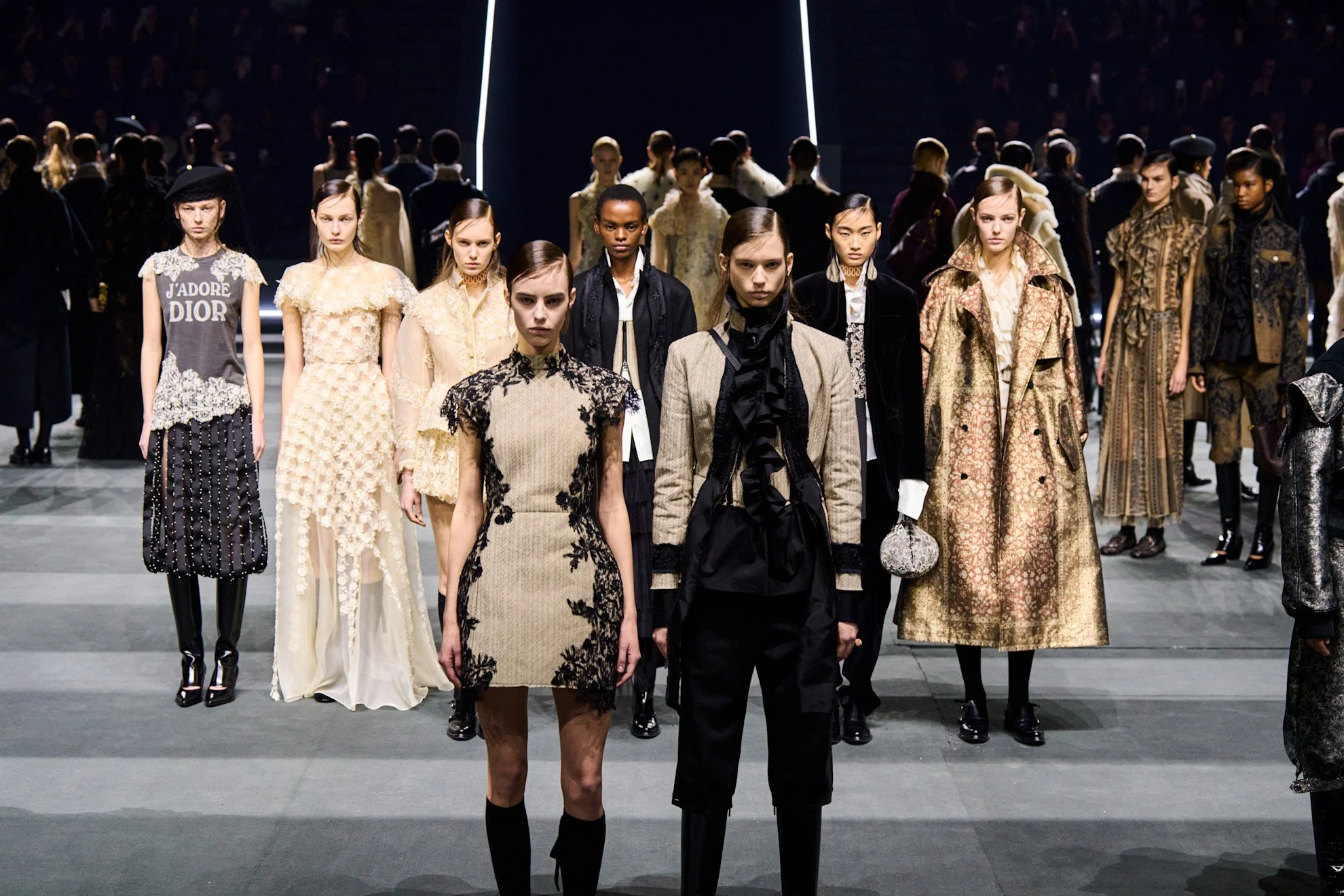Fall 2025 Fashion Report: Runway Highlights, Designer Shifts & Creative Direction
Every season, I make the same promise: to write my fashion month report just as the show collections wrap. And every season, I miss it. After more than three decades in this industry, I’ve come to accept that the runway and retail are two distinct worlds. What we see in February or March is not what we feel by August or September. Fashion is not static it evolves, and so does our perception of it.
Dior by Maria Grazia Chiuri
Fall 2025 is a perfect example. The collections shown months ago now reappear in a different light. Cultural shifts, celebrity moments, and even the weather change how we interpret them. What felt conceptual in Paris now feels wearable in London. What seemed theatrical in Milan now feels intimate in New York. This season, more than ever, the collections have matured and so has our understanding of them.
Theatrical Beginnings and Creative Exits
Fashion month unofficially began with Marc Jacobs in New York, off-schedule and unapologetically bold. His show was a masterclass in exaggeration—voluminous silhouettes, surreal proportions, and playful references to iconic women, both fictional and real. From Betty Boop to Marie Antoinette, Jacobs reminded us why he remains one of the most fearless creative directors of our time. In an era where many brands play it safe, he continues to surprise us.
Jonathan Anderson, then still at Loewe, presented a showroom-only collection that felt cerebral and introspective. Now, with his appointment at Dior—taking over from Maria Grazia Chiuri and also helming Dior Menswear—September promises a seismic shift. We’ve already had glimpses of his vision, and the anticipation is palpable.
Dolce & Gabbana turned the streets of Milan into their stage, inspired by how models style themselves off-duty. The show blurred the line between theatre and reality, with guests seated between the brand’s dramatic set and the actual street. It was a celebration of fashion as lived experience—raw, theatrical, and deeply connected to the people.
Debuts, Departures, and New Directions
Sarah Burton’s debut at Givenchy was quietly powerful, delivering a strong first collection that felt both modern and rooted in the house’s heritage. Haider Ackermann’s arrival at Tom Ford was met with applause Tom himself was present to congratulate him. It was a symbolic passing of the torch.
Chanel, still without a creative director, leaned on its in-house team to channel Karl Lagerfeld’s legacy. The result was a collection that felt familiar yet fresh, a tribute to continuity in a time of transition. Matthieu Blazy’s first collection for Chanel is set for Spring/Summer 2026, debuting in Paris this October.
Gucci’s long-speculated appointment of Hedi Slimane was replaced by Desma Gvasalia, who moved from Balenciaga. His debut collection for Summer 2026 is confirmed for Milan in September. As part of the Kering group, his transition feels both strategic and symbolic a new chapter for Gucci.
At Valentino, Alessandro Michele’s “Gods & Monsters” was a cinematic feast. The red bathroom set evoked David Lynch, while a surprise collaboration with Vans added a rebellious twist. Is it Valentino or is it Alessandro? For me, it’s both and it’s brilliant. I’ve been a fan of his work since his debut at Gucci, and while some question whether he’s honouring the Valentino legacy, I believe he’s redefining it for 2025. We don’t want to wear 1960s retro what we want is emotion, imagination, and relevance.
Duality and Dialogue
Miuccia Prada and Raf Simons explored the question “What is feminine beauty today?” at Prada. Their answer was radical in its restraint non-sexiness as a statement. The collection felt intellectual, almost philosophical, challenging traditional notions of allure.
At Miu Miu, Miuccia flipped the narrative. She celebrated curves, made the breast a focal point, and layered tank tops over T-shirts. It was playful, provocative, and faithful to Miu Miu’s DNA not just in garments, but in how the look is worn. It’s a brand that understands styling as storytelling.
Chloé continued its boho chic journey, reviving the iconic Paddington bag a nod to Phoebe Philo’s era. It was nostalgic without being retro, a reminder that accessories carry memory as much as style.
Saint Laurent, under Anthony Vaccarello, revisited the 90s with lace and color-blocking. He drew inspiration from a period when Yves Saint Laurent was considered passé. Will it resonate today? Perhaps. Fashion loves a comeback, especially when it’s laced with irony.
Silvia Venturini Fendi stepped into solo leadership at Fendi following Kim Jones’ departure. Her collection, marking the brand’s 100th anniversary, was confident and compelling. It celebrated both fashion and accessories with equal strength. I hope she continues solo—her vision deserves its own spotlight.
Jil Sander, too, proved resilient despite losing its creative directors. The collection was strong, focused, and true to the brand’s minimalist ethos.
And finally, Donatella Versace bid farewell as creative director, transitioning to brand ambassador as the house joins the Prada Group. Dario Vitale, known for his work at Miu Miu and close collaboration with Miuccia Prada, now takes the reins. It’s a bold move and one that could redefine Versace’s future.
Donatella Versace at the Versace Fall 2025 show in Milan.
The Palette of Possibility
Fall 2025 offers wearability across the spectrum from bold statements to quiet luxury. Chocolate brown emerges as the season’s anchor, grounding the collections with warmth and depth. But colour is everywhere—from vibrant primaries to soft pastels. It’s a season of emotional expression, where colour therapy becomes a form of self-care.
The collections reflect a world in flux. They offer comfort, fantasy, rebellion, and reflection. They speak to every taste, every mood, every moment. And while the runway may be months behind us, the conversation is just beginning.































